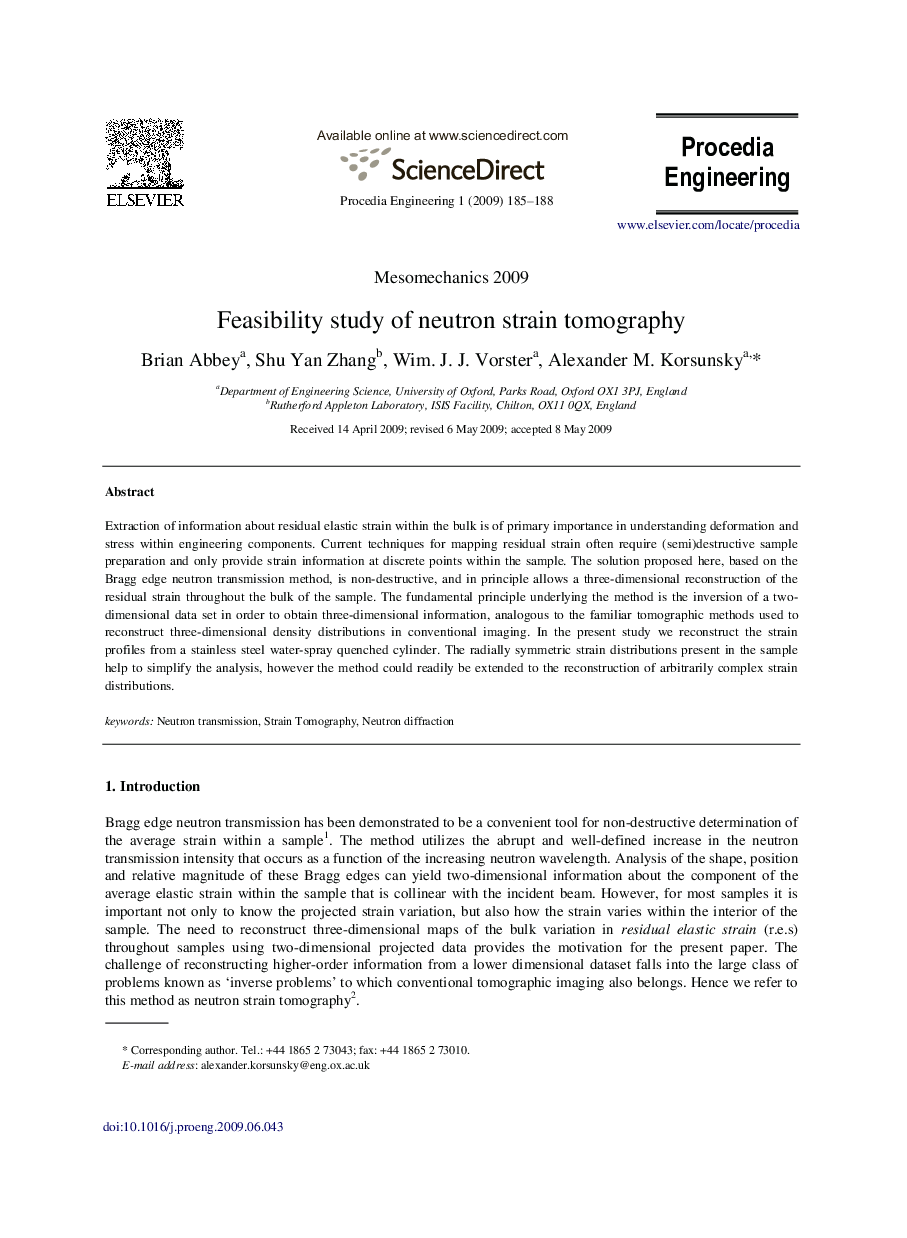| Article ID | Journal | Published Year | Pages | File Type |
|---|---|---|---|---|
| 864573 | Procedia Engineering | 2009 | 4 Pages |
Extraction of information about residual elastic strain within the bulk is of primary importance in understanding deformation and stress within engineering components. Current techniques for mapping residual strain often require (semi)destructive sample preparation and only provide strain information at discrete points within the sample. The solution proposed here, based on the Bragg edge neutron transmission method, is non-destructive, and in principle allows a three-dimensional reconstruction of the residual strain throughout the bulk of the sample. The fundamental principle underlying the method is the inversion of a two-dimensional data set in order to obtain three-dimensional information, analogous to the familiar tomographic methods used to reconstruct three-dimensional density distributions in conventional imaging. In the present study we reconstruct the strain profiles from a stainless steel water-spray quenched cylinder. The radially symmetric strain distributions present in the sample help to simplify the analysis, however the method could readily be extended to the reconstruction of arbitrarily complex strain distributions.
